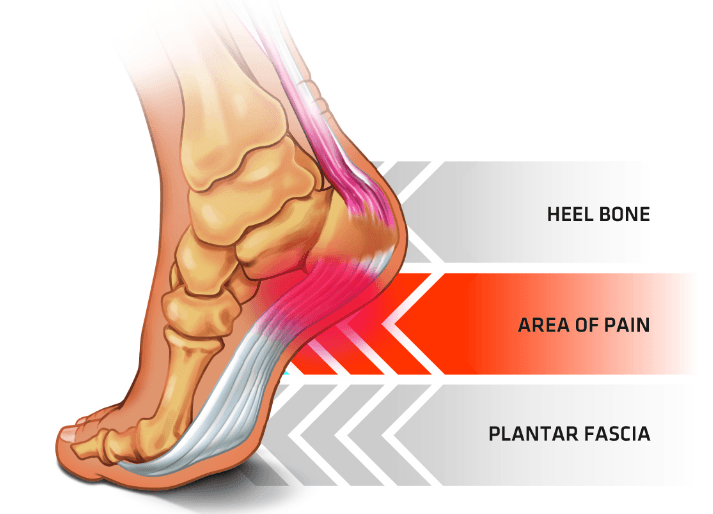Chiropractic Care Provides Long-Term Effective Solutions to Relieving Pain Without Opioids
October is National Chiropractic Month and the American Chiropractic Association has chosen the theme for 2023 to be “Relieve, Restore, Resume.” The campaign will raise awareness of the prevalence and impact of chronic pain and the benefits of chiropractic’s non-drug approach to pain management for those who seek relief. Chiropractic care promotes the use of non-drug approaches as a first line of defense against pain, and we could not agree more. At Northern Nevada Chiropractic, we have always believed that an alternative to invasive medications is the best medicine. With the rampant opioid epidemic, we are working every day to help our patients live pain-free lives without drugs or surgery.
Chiropractic care works with the body to realign the nervous system and we have several non-invasive modalities that can prevent, decrease or even eliminate pain. Our goal is to prevent the patient from ever having to seek pain medications, or work with them to fix the cause of the pain so that pain medications can be significantly reduced or eliminated.
Northern Nevada Chiropractic often partners with pain medicine doctors who specialize in pain management. These physicians equally agree that non-opioid therapies can lead to some of the best, sustainable pain relief and do not want their patients reliant on or addicted to potent pain medicines like opioids.
At Sierra Neurosurgery Group, interventional pain management physicians Dr. Jacob Blake and Dr. Chris Woolley utilize multiple non-medication strategies to help patients with their pain. Having both specialized in interventional care, they can perform x-ray guided injections and nerve blocks safely to help with spine pain, or joint pain. By targeting the source of pain with these injections, they can often times avoid using pain medications altogether and patients can achieve relief. They often will integrate physical therapy and chiropractic care into their treatment recommendations as they firmly believe multiple approaches is the best strategy for pain relief.
What is an Opioid and Why are They So Dangerous?
Opioids are a broad group of pain-relieving drugs that work by interacting with opioid receptors located in multiple areas of your body (i.e. brain, spinal cord, and nerves.) Opioids can be made from the poppy plant or synthesized in a laboratory. When opioid medications travel through your blood and attach to opioid receptors in your brain cells, the cells release signals that reduce your perception of pain and boost your feelings of pleasure.
At this time, there is no clinical evidence to support the use of chronic opioid therapy for the treatment of chronic pain syndromes. Based on the 2020 AHRQ Systematic Review completed by the US Department of Health and Human Services, 70 placebo-controlled trials demonstrated minimal short-term improvement in chronic pain with opioid therapy.
At lower, controlled doses, opioids may make you feel sleepy or cause nausea or constipation, but higher doses can slow your breathing and heart rate, which can lead to death. The feelings of pleasure that result from taking an opioid are what lead to the desire for more and higher doses of the drug, eventually resulting in addiction.
Perhaps two if the most dangerous aspects of opioids are that they cause Tolerance and Hyperalgesia. These two words are not used very frequently, so let’s define them:
- Tolerance is the word used to describe the phenomenon that occurs when a person’s body requires more and more medication to feel the same effects they did when they first started using that medication. Opioids cause tolerance, meaning that a person may start taking a small dose but after a few months they will inevitably stop feeling the pain relief from that dose. They may ask their doctor to increase the dose because the low dose is no longer working at controlling their pain, and many doctors will do this. This creates a problem however because as the doses of the opioids increase, so do the side effects they cause – such as constipation, nausea, or even a decreased respiratory rate. To make matters worse, pain relief does NOT get better as doses increase, which has been proven in many studies.
- Hyperalgesia is a dreaded side effect of opioid medications. It is when the opioids a person takes actually INCREASES their pain levels. This occurs slowly over time as the body’s opioid receptors get accustomed to interacting with the opioid medication. These receptors can become “sensitized” and cause the person to feel more pain to something that is normally not very painful.
For these reasons, and many more, chronic pain management physicians do not recommend using opioids for chronic pain.
The Opioid Crisis in Nevada
The opioid crisis has hit the entire U.S. hard. Inadequate pain management coupled with the epidemic of prescription opioid overuse and abuse has taken a severe toll on the lives of tens of thousands of people in the United States. Did you know that the United States takes 80% of the pain medications in the world? Eighty percent! That is a staggering number and while that number includes legitimate prescriptions, it also demonstrates the gross overuse and misuse of pain medication in America.
According to the Centers for Disease Control and Prevention (CDC), as many as one in four patients who receive prescription opioid long term for non-cancer pain in primary care settings struggles with addiction. Every day, more than 1,000 people are treated in the ER for misusing prescription opioids.
Here in Nevada, the statistics around opioid abuse and addiction are staggering. According to the State’s Department of Health and Human Services Opioid Surveillance report from 2021, the number of emergency department encounters increased by 67% from 2010 to 2020 and inpatient admissions increased by 66% in that same time period.
In terms of demographics in 2020, 68% of the opioid-related emergency department encounters were White non-Hispanic. In the hospital, 68% of the inpatient admissions were White non-Hispanic and were most prevalent among 25-34 years old Nevada residents (24%).
From 2010 to 2020, the number of opioid-related overdose deaths increased. The rate per 100,000 Nevada residents for opioid-related overdose deaths increased by 5% from 16.2 to 16.9.
Death from overdose in Nevada largely mirrors the hospitalization demographic statistics with 66% of the opioid-related overdose deaths being White non-Hispanic and opioid related deaths were most prevalent among 25-34 year-old Nevada residents.
Relieving Pain Without Medications
Guidelines published by the American College of Physicians, the Center for Disease Control and Prevention and other major healthcare groups recommend people try nonpharmacologic treatments as a first line of defense against pain before moving on to other options.
There is a growing body of research that validates the effectiveness of chiropractic services, leading many respected health care organizations to recommend chiropractic and its non-drug approach to pain management. Most notably, the American College of Physicians (ACP) updated its guidelines for the treatment of acute and chronic low back pain in 2017 to recommend first using non-invasive, non-drug treatments before resorting to drug therapies.
In addition to chiropractic adjustments, NNC offers several other modalities that help relieve or eliminate pain safely. Including…
Spinal Decompression
Spinal Decompression Therapy is FDA cleared and has a very high success rate for pain associated with herniated or bulging discs – even after failed surgery. It is a non-surgical therapy for the relief of back and leg pain, or neck and arm pain.
At Northern Nevada Chiropractic we specialize in nonsurgical spinal decompression to help relieve back pain. Spinal decompression works by gently stretching the spine and relieving intradiscal pressure from the spinal discs. Spinal discs are gel-like cushions between the bones in your spine and if they are injured, ruptured, or out of place, this causes pain and limited mobility. Spinal decompression causes bulging or herniated disks to retract by creating negative pressure in the disc and stretching the spine, which takes pressure off nerves and other structures in your spine. This helps promote movement of water, oxygen, and nutrient-rich fluids into the disks so they can heal.
Laser Therapy
We use the Aspen Laser Systems Laser Therapy to treat sports injuries, acute pain, and heal chronic injuries. Real healing doesn’t occur until muscle fibers, ligaments, or tendons are repaired. Laser therapy for pain relief stimulates the body’s cells to repair themselves, resulting in healing. It also provides an analgesic effect and reduction of inflammation.
Laser therapy is also highly effective for post-surgery recovery. Laser therapy helps to reduce the formation of scar tissue and reduce inflammation while increasing range of motion. This results in faster recovery and the ability to begin physical therapy sooner.
Many athletes use laser therapy for post workout treatments. Laser therapy improves blood flow in muscles, ligaments, and joints while helping to flush out toxins, speed recovery and minimize muscle soreness. It has also helped thousands of athletes reduce their recovery time and improve their performance.
Dry Needling
Dry needling is a highly effective treatment to improve range of motion, alleviate pain, relieve tension, and calm muscle spasms. It is different from acupuncture in that it focuses on the musculoskeletal and neuromuscular systems vs. acupuncture which focuses on internal organ dysfunction or the balance of acupuncture meridians. Doctors LoConte, Welch and Riley are all certified in Dry Needling and see tremendous results in patients who are struggling with pain and achieving full range of motion.
Laser Therapy and Dry Needling Combined
In many cases, laser therapy and dry needling are used together for maximum benefit to the patient. Laser therapy packs a lot of good energy into the cells it is treating. Dry needling focuses tension release in certain trigger points. Your doctor will first laser the treatment area and then use the dry needles to pinpoint focus that energy down into a specific place. Dry needling combined with laser therapy is a one-two punch that works on most everything in the body including major joints, low back and disc injuries, neck and shoulder pain and stiffness, and migraines and headaches.
Massage
Like chiropractic medicine, massage offers a drug-free, noninvasive and hands-on approach to helping the body heal itself. At NNC, we partner with Angelique Callegari Massage to offer chiropractic massage therapy to all our patients. There are many forms of massage, but at AC Massage and NNC, the focus is on therapeutic, rehabilitating massage to help get patients out of pain, realigned and cleared of toxins.
Ultrasound
Ultrasound therapy works by sending sound waves to deliver deep heat to the affected tissues. It is a proven technique to treat stiffness, swelling and pain in the back. After an ultrasound treatment, patients experience increased circulation and pain-free movement. Ultrasound therapy has a minor warming effect on the tissues, it also causes expansion and contraction in the tiny gas bubbles of the soft tissues. This helps to decrease the inflammatory response, reducing tissue swelling and thus decreasing pain.





